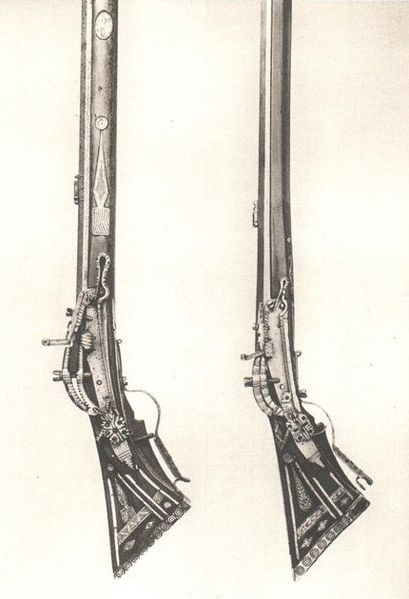A snaphance or snaphaunce is a type of firearm lock in which a flint struck against a striker plate above a steel pan ignites the priming powder which fires the gun. It is the mechanical progression of the wheellock firing mechanism, and along with the miquelet lock and doglock are predecessors of the flintlock mechanism.
Swedish snaphance guns from the mid 17th century
The lock of a firearm is the mechanism used to initiate firing. It is a historical term, in that it generally refers to such mechanisms used in muzzle-loading and early breech-loading firearms. Side-lock refers to the type of construction, in which the individual components of the mechanism are mounted either side of a single plate. The assembly is then mounted to the stock on the side of the firearm. In modern firearm designs, the mechanism to initiate firing is generally constructed within the frame or receiver of the firearm and is referred to as the firing or trigger mechanism.
This flintlock mechanism is distinct from the metal barrel extending to the right, and the surrounding wooden stock encloses and obscures the trigger mechanism connection to the actuation spring.
The patilla style miquelet lock fully cocked. An extension of the cock is resting on and restrained by the upper of the two horizontal sears protruding through the lock-plate. The movement of the sear is nominally parallel to the axis of rotation of the cock. Depressing the trigger causes the sear to be drawn inward and release the cock. This type of sear was used in firelocks prior to the advent of the true flintlock.



